Press Release
Agalta Protocol: A Layer 2 solution with the best overall performance
Agalta Protocol: A Layer 2 solution with the best overall performance
Since its invention in 2016, Ethereum has become the most active and busiest blockchain network after years of repaid development. It is the undisputed NO.1 public chain in all perspectives, including richness of ecology applications, on-chain assets scale, token security and other core indicators.
In 2021, with the emerging of digital currency bull market in the past few months, the transaction frequency of digital currencies deployed in the Ethereum network increased massively, resulting in a significant increase in network usage, especially the bursting in DeFi area. This makes a desperate lack of the original throughput.
For a long time, the entire crypto community has been working hard to solve the throughput and high gas fees problem of Ethereum. One of the major solutions is Ethereum 2.0, which will increase TPS greatly. But is it possible to fix this from another perspective? The answer is yes, it is Layer 2.
About Layer 2
As we all know , the biggest weakness of ETH is the performance. ETH uses full nodes ,which led to low speed and congestion during transactions. ETH came up with the solution of sharding to improve its performance, means to divide Ethereum blockchain into several shards, put nodes in different shard to participate in accounting and consensus. After sharding, Ethereum become a number of relatively smaller blockchains, and the amount of nodes on each shard is significantly reduced. Thus improve work efficiency greatly.
However, sharding based on current situation causes great challenges for development and upgrades, as Ethereum is working constantly everyday and already has a lot of nodes and data.
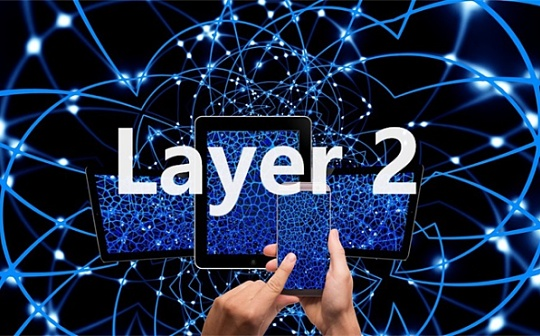
What is Layer 2? Literally , it refers to the second layer of network. The logic is to transfer and process transactions from Ethereum’s main chain Layer 1 (L1) to Layer 2( L2), then send results back to Layer 1 for confirmation. We call this solution Ethereum Layer 2.
Simply put, Layer 2 develops another blockchain outside the Ethereum main chain, transfers transactions on Ethereum to Layer 2 for further processing, and sends results or briefing back to Ethereum blockchain. The theoretical TPS of L2 reaches 2000-4000, which surpasses Visa’s processing capacity-1700 transactions per second. Therefore, many people believe that the L2 solution is the hope for Ethereum to win the future.
At present, Layer 2 ecological construction has been carried out in full force, and design schemes in different types have received support from a certain amount of community users. However, the trilemma (i.e. decentralization, security and scalability, only two options are achievable) remains an unavoidable issue for most schemes. However, Agalta Protocol provides another thinking to solve this for the market.
About Agalta
Agalta is a decentralized cross-chain protocol featured by its high-speed, security, and reliability. It is one of the first expansion protocols that support Ethereum , and can efficiently solve the congestion and high gas fees problems of Ethereum .Through side chain expansion technology, Agalata extends the internet to existing and future blockchain, Agalta helps developers to build Dapp quickly, and carry out large-scale commercial applications.
Agalta Protocol is committed to the construction of the public chain Layer-2 cross-chain DeFi ecosystem, will launch multi-chain cross-chain research and development plan as scheduled, and gradually open Layer-2 high-speed cross-chain network of Binance Smart Chain, Huobi Eco-Chain, Polkadot Main Chain, OKT and other public chains. As well as the enterprise development toolkit. One click fork of Defi projects and products on Ethereum will also be available here. And Agalata will become a cornerstone of the global public chain Defi eco-system.
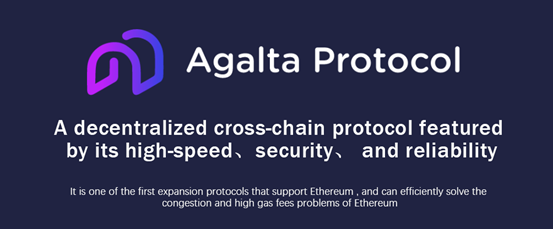
Intoday’s market, Layer 2 solutions like Rollup and State Channel are emerging, including some repetitive functions. Many investors tend to be speculators and ignore some common problems of projects. For example, in the economic model of Optimistic Rollup Protocol, each batch sequencer of epoch needs a smart contract called bond administrator to be marked as collateral. To become a collateral sequencer, a fixed amount of ETH has to be added to the contract. This economic model can prevent the sequencer from becoming abnormal, but it does not fix the potential risk that the verifier may try to send a large number of fraud proofs to the blockchain in different batches (Forcing a large amount of L1 calculations ).
Celer, a representative project of the State Channel. Even though the side chain channel in its network can significantly reduce required collateral deposit, it still has to be proportional to channel numbers and replay capacity of a singal channel (such as payment). This requires massive liquidity in Celer network to ensure normal running of State Channel. Besides, usually the State Channel requires users from both sides to be online all the time, otherwise fairness and security cannot be guaranteed. This kind of availability lackness limits State Channel’s application greatly.
Aalta Protocol technical advantages
Agalta Protocol carried out in-depth research and innovation to solve the common problems mentioned above. And proposed a new generation of Layer 2 Agalta solution: namely , a high-performance cross-chain Protocol that supports multi-chain ecology. Specifically, it has the following highlights.
● Decentralized network: An efficient, safe, and credible decentralized side chain network. The first layer-2 expansion protocols that support Ethereum features scalability and robustness.
● Cross-chain anchoring: AGAT provides a two-way anchored Aga-adapter (adapter) for ETH and other ERC-20 tokens to transfer them to the Agalta chain and provide an EVM-compatible execution environment for DeFi applications.
● AMM model: The newly optimized AMM model automatically prices assets by using the pricing algorithm in the smart contract and creates a liquidity pool for each transaction token. The AMM pool provides liquidity for asset transactions in an automated manner.
● Ultra-high TPS: On the high-performance cross-chain network based on the Agalta API framework, the theoretical TPS performance is as high as 140,000+, far exceeding the existing blockchain transaction performance.
● 0 Gas fee: The unique layer-2 architecture avoids network congestion and the high gas fee. The 0 gas fee allows users to trade freely without worrying about high handling fees and network delays
● Real-time transactions: All transactions are migrated to Layer-2. Users can conduct real-time transactions without waiting for the confirmation time of a block.
● Privacy and security: Based on the advantages of blockchain distributed structure, anonymity and non-tamperable data, the data privacy of transaction users is fully protected, which avoids personal data leakage and data loss
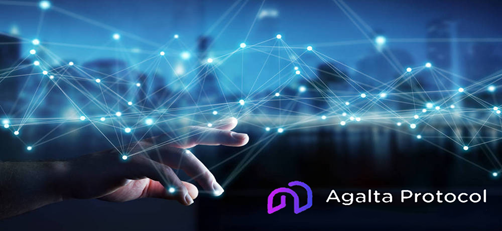
Layer 2 solutions comparision
Now let’s compare all the representative projects in the market in a table
Comparison of Layer-2 Expansion Technology Routes
| State channel | Plasma | Optimistic Rollups | ZK Rollup | Agalta | |
| Typical project | Celer, Pisa | OMG, Matic | OVM, Fuel | zkSync, Loopring | Agalta |
| Concept | The state channel provides direct one-to-one transfer between two addresses. However, a large number of calculations involved in the interaction between users are calculated and communicated in an encrypted and secure way under the chain. The final settlement of the balance takes place in the expansion plan on the Ethereum main network. | Ethereum’s second-tier expansion framework, based on the main chain (chain-in-chain). Anyone can create different Plasma based on the main chain to support different businesses. Plasma cannot guarantee the safety of the sub-chain, but it can guarantee that users can safely retrieve their assets and return to the main chain when a security incident occurs. | Responsible for a lot of computing under the chain, and security on the chain. A two-layer expansion technical route that ensures the correctness of the state update under the chain by using fraud proof technology. | Responsible for a lot of computing under the chain, and security on the chain. A two-layer expansion technical route that ensures the correctness of the state update under the chain by using zero-knowledge proof technology. | The Agalta Protocol cross-chain architecture consists of Aga-adapter, Aga-Hub cross-chain gateway, ACCP cross-chain communication protocol, and Layer-2 Agalta chain relay cross-chain network group. A two-layer expansion technology route that guarantees the security of cross-chain transactions by using technologies such as S-SPV certification. The transaction links are all completed in the blockchain network. Data is secure and transparent. |
| Security | Risk of loss of off-chain data | Risk of rollback | The incentive mechanism of Bosu theory. The risk increases when the funds inside Rollup increase. | Cryptography, arbitrariness and abandonment theory. A third-party credit is required. | Cryptography, permission chain, and transaction links are transparent. |
| Performance (TPS) | Thousands | Thousands | 2000 | 500 | 140,000+ |
| Performance compared to ETH | Hundreds of times | Hundreds of times | About 140 times | About 35 times | About 10,000 times |
| Gas fee | 0 | A small amount | A small amount | A small amount | 0 |
| On chain transaction cost | Low | Low | Medium | High | Extremely low |
| Effectiveness validation | arbitration mechanism | Challenge afterwards | Fraud proof | Zero-knowledge proof | S-SPV certificate (strict simple payment verification) |
| Withdraw time | One confirmation | 1-2 weeks | 7 days | 7 days | < 1 minute |
| Smart contract compatibility | Restricted | Restricted | Compatible | Restricted | Compatible |
| Advantages and disadvantages | Advantages: suitable for high-frequency transaction. The off-chain high-speed payment channel can reach thousands of transactions per second. Disadvantages: 1. Only for specific applications. Participation is not open. 2. The user needs to lock the funds in the multi-sign contract in advance. 3. Extended universal smart contracts are not supported. | Advantages: You can create multiple plasma sub-chains as required. The transaction speed in the sub-chain is faster, and the handling fee is low. Disadvantages: 1. The waiting time for withdrawing funds to layer-1 is too long. 2. The extended general smart contract is not supported. | Advantages: support the existing general smart contract EVM, strong composability Disadvantages: long withdrawal cycle, and low capital utilization | Advantages: The user’s withdrawal is fast. Disadvantages: 1. Existing general contracts are not currently supported 2. High technical difficulty 3. Threat of OP Rollup ecology | Compatible Advantages: efficient transaction, 0 gas fee, short withdrawal time Disadvantages: high technical difficulty in cross-chain development |
As shown in the table, Agalta Protocol stands out among many projects with excellent overall performance. It is very suitable as the best L2 solution that supports high-performance applications under the main net Ethereum L1.
Editor’s note
We have enough reason to believe that the landing of Layer 2 and Ethereum 2.0 will have the chance to become an important fuel for the second expansion of Ethereum market. And this will eventually make Ethereum to a financial giant with over one trillion US dollars. In the future, Agalta Protocol will play a major role in L2 ecosystem construction, and develop to an important infrastructure of the global blockchain, let’s witness the history together.
https://medium.com/@agaltaprotocol
About Author
Disclaimer: The views, suggestions, and opinions expressed here are the sole responsibility of the experts. No Digi Observer journalist was involved in the writing and production of this article.
Press Release
StatisticSports Launches New Mobile App for Android and iOS
Your Personal Custom Live Football Notifications – Now in Your Pocket
Estonia, 28th Apr 2025 – StatisticSports.com, a leading provider of real-time sports data and analytics, proudly announces the launch of its brand-new mobile application for Android and iOS. Designed for both seasoned bettors and passionate football fans, the app delivers instant, fully customizable live football notifications—right when you need them most.
The StatisticSports App puts the power of precision betting into the palm of your hand. With real-time updates, odds shifts, lineup changes, in-play stats, and alert personalization, you’ll never miss a crucial moment again.
Key Features Include:
Live Football Alerts: Get real-time updates on goals, red cards, corners, and other game events.
Custom Notifications: Choose what matters to you—set alerts for specific teams, leagues, odds movements, and game milestones.
Smart Betting Insights: Stay ahead with data-driven insights and value-spotting tools powered by the StatisticSports platform.
User-Friendly Interface: Intuitive design that lets you set up alerts in seconds and stay focused on what matters—winning.
“We created this app to bring the power of our platform into a more accessible, on-the-go format,” said marketing team of StatisticSports. “Whether you’re betting live or just following your favorite teams, this app ensures you’re always in the know—anytime, anywhere.”
The StatisticSports App is now available for free download on the Google Play Store and Apple App Store.
Media Contact
Organization: StatisticSports.com
Contact Person: Andrew Angelopoulos
Website: https://statisticsports.com/
Email: Send Email
Country:Estonia
Release id:27040
View source version on King Newswire:
StatisticSports Launches New Mobile App for Android and iOS
It is provided by a third-party content provider. King Newswire makes no warranties or representations in connection with it.
About Author
Disclaimer: The views, suggestions, and opinions expressed here are the sole responsibility of the experts. No Digi Observer journalist was involved in the writing and production of this article.
Press Release
StatisticSports Launches New Mobile App for Android and iOS
Your Personal Custom Live Football Notifications – Now in Your Pocket
Estonia, 28th Apr 2025 – StatisticSports.com, a leading provider of real-time sports data and analytics, proudly announces the launch of its brand-new mobile application for Android and iOS. Designed for both seasoned bettors and passionate football fans, the app delivers instant, fully customizable live football notifications—right when you need them most.
The StatisticSports App puts the power of precision betting into the palm of your hand. With real-time updates, odds shifts, lineup changes, in-play stats, and alert personalization, you’ll never miss a crucial moment again.
Key Features Include:
Live Football Alerts: Get real-time updates on goals, red cards, corners, and other game events.
Custom Notifications: Choose what matters to you—set alerts for specific teams, leagues, odds movements, and game milestones.
Smart Betting Insights: Stay ahead with data-driven insights and value-spotting tools powered by the StatisticSports platform.
User-Friendly Interface: Intuitive design that lets you set up alerts in seconds and stay focused on what matters—winning.
“We created this app to bring the power of our platform into a more accessible, on-the-go format,” said marketing team of StatisticSports. “Whether you’re betting live or just following your favorite teams, this app ensures you’re always in the know—anytime, anywhere.”
The StatisticSports App is now available for free download on the Google Play Store and Apple App Store.
Media Contact
Organization: StatisticSports.com
Contact Person: Andrew Angelopoulos
Website: https://statisticsports.com/
Email: Send Email
Country:Estonia
Release id:27040
View source version on King Newswire:
StatisticSports Launches New Mobile App for Android and iOS
It is provided by a third-party content provider. King Newswire makes no warranties or representations in connection with it.
About Author
Disclaimer: The views, suggestions, and opinions expressed here are the sole responsibility of the experts. No Digi Observer journalist was involved in the writing and production of this article.
Press Release
Wolfenburg Roofing Announces Roofing Excellence Across Ottawa, Gatineau, and Toronto with Innovative Solutions and Canadian Craftsmanship
Canada, 28th Apr 2025 — Wolfenburg Roofing, one of Canada’s most trusted and experienced roofing contractors, proudly announces its continued expansion across Ottawa, Gatineau, and Toronto, delivering top-tier residential and commercial roofing services rooted in innovation, quality, and Canadian craftsmanship.
With over 25 years of expertise and a strong reputation built on integrity, precision, and customer satisfaction, Wolfenburg Roofing is reinforcing its presence across key cities to meet growing demand for durable, aesthetically pleasing, and energy-efficient roofing systems. The company’s commitment to excellence ensures each project—whether residential or commercial—is completed with meticulous attention to detail and long-term performance in mind.
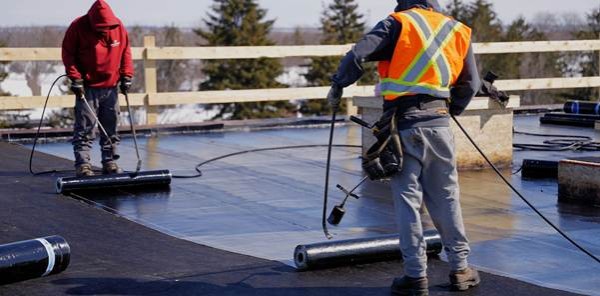
Serving Homes and Businesses with Expertise
Wolfenburg Roofing’s comprehensive portfolio covers a wide array of services for both residential and commercial clients. From roof installation and repairs to inspection, maintenance, and consulting, Wolfenburg stands out as a full-service provider with unmatched versatility and knowledge.
Residential Roofing
For homeowners, Wolfenburg Roofing provides innovative and affordable solutions that enhance property value, comfort, and sustainability. The company offers roofing replacement, maintenance, inspection, green roof installations, roof-over projects, and emergency repairs.
Shingle roofs remain a classic choice for many Ottawa homes, offering affordability and durability. Meanwhile, flat roofs are gaining popularity for modern residential designs. Wolfenburg specializes in flat roofing systems made from EPDM, TPO, PVC, and Modified Bitumen Torch, ideal for homeowners seeking a sleek and minimalist roof profile.
Flat roofs offer a multitude of advantages beyond their visual appeal. These include the potential for rooftop gardens, patios, and solar panels, which enhance both energy efficiency and lifestyle opportunities. Homeowners benefit from cost-effective roofing with reduced construction materials, easier maintenance, and increased structural strength.
Components of a flat roofing system include:
- Plasterboard Ceiling: Visually covers the interior and supports ventilation to prevent moisture buildup.
- Decking: The structural foundation built from wooden beams.
- Insulation and Vapour Barrier: Maintains optimal temperature and prevents moisture-related damage.
- Waterproof Layer and Protective Covering: Ensures resistance against rain and snow while enhancing longevity.
Wolfenburg Roofing ensures every residential flat roof is designed and installed with expert precision and the highest quality products. Their professionally trained staff are equipped with the technical knowledge necessary to ensure every project is done right the first time.
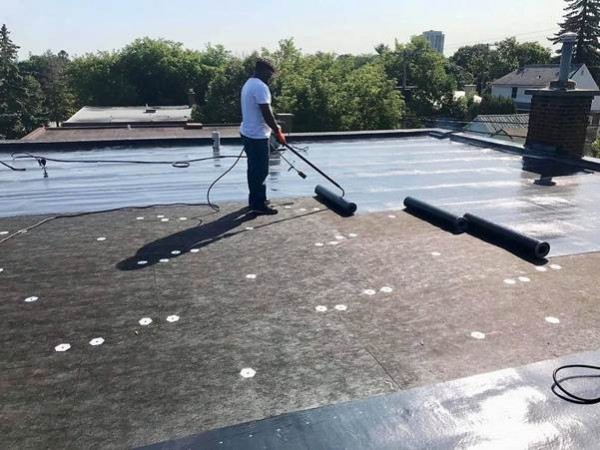
Commercial Roofing
Wolfenburg Roofing’s commercial division brings large-scale roofing solutions to institutions, industrial facilities, warehouses, office buildings, and retail centres across Ottawa, Gatineau, and Toronto. The company offers:
- Flat Roofing Systems: Designed for expansive surface areas, using TPO, EPDM, PVC, and Modified Bitumen for superior performance.
- Shingle Roofing: For properties requiring traditional aesthetics with advanced durability.
- Green Roofing: Environmentally friendly options that reduce heat absorption and support sustainability goals.
- Built-Up Roofing (BUR): Multi-layered systems ideal for low-slope and flat commercial roofs.
By integrating innovation with practicality, Wolfenburg helps businesses minimize long-term maintenance costs and protect their assets with roofing solutions tailored to their operational needs.

Signature Services Offered
Wolfenburg Roofing’s team of skilled professionals offers a wide range of services tailored to meet each client’s needs:
- Roof Installation – New roofs for homes and businesses, including guidance on selecting the best materials and styles.
- Roof Repair – Fast and efficient services to address leaks, storm damage, and wear and tear.
- Roof Replacement – Complete roof replacement for aging or damaged systems using superior materials.
- Roof Maintenance – Scheduled maintenance programs to extend the life of any roofing system.
- Roof Inspection – Thorough assessments to detect issues early and ensure optimal performance.
- Emergency Roofing Services – Rapid response to urgent issues to prevent further damage.
- Roof Consulting – Professional consulting for architectural projects, renovations, or property management.
Service Areas: Expanding Horizons
Wolfenburg Roofing is proud to serve clients in Ottawa, Gatineau, and Toronto, bringing decades of experience and top-rated service to a wider audience.
- In Ottawa, the company continues to be a leading residential and commercial roofing provider. Its locally driven approach has earned the trust of homeowners and business owners alike.
- In Gatineau, Wolfenburg delivers premium services to meet the unique architectural needs of Quebec’s residential and commercial properties.
- In Toronto, the company is expanding its reach to address the needs of Canada’s largest metropolitan region, offering a trusted alternative to property developers, managers, and homeowners.
Commitment to Canadian Craftsmanship and Sustainability
At the heart of Wolfenburg Roofing’s mission is a deep respect for Canadian craftsmanship and sustainable construction practices. The company sources top-quality materials from trusted suppliers, ensuring each roofing system is designed for durability, performance, and energy efficiency.
By offering green roofing and support for solar panel integration, Wolfenburg Roofing aligns itself with environmentally conscious initiatives, helping clients reduce their carbon footprint and increase the energy efficiency of their properties.
Client Satisfaction Above All
Wolfenburg Roofing’s reputation is built on its unwavering commitment to customer satisfaction. The team prioritizes transparent communication, professional advice, and personalized solutions. From the initial consultation to the final inspection, Wolfenburg ensures that clients are informed and comfortable every step of the way.
Every project is backed by warranty options and post-installation support, ensuring peace of mind and long-term reliability. The company’s glowing reviews and high rate of referrals are a testament to the trust and satisfaction of its clientele.
What Sets Wolfenburg Roofing Apart?
- Over 25 Years of Experience
- Fully Licensed and Insured
- Professionally Trained Staff
- Top-Quality Canadian Materials
- Customized Solutions for Residential and Commercial Needs
- Exceptional Customer Service
- Free Consultations and Transparent Quotes
About Wolfenburg Roofing
Wolfenburg Roofing is a Canadian-owned and operated roofing contractor with more than 25 years of industry-leading experience in both residential and commercial roofing solutions. With a strong presence across Ottawa, Gatineau, and Toronto, the company has built its reputation on a foundation of exceptional craftsmanship, integrity, and a customer-first approach. Wolfenburg specializes in advanced roofing systems, including shingle and flat roofs, green roofing, and energy-efficient solutions using premium Canadian materials. A fully licensed, insured, and professionally trained team handles every project, committed to delivering quality, longevity, and tailored service. Committed to innovation and sustainability, Wolfenburg Roofing continues to set new standards in the roofing industry—offering reliable solutions
Contact no: 613-800-9058
About Author
Disclaimer: The views, suggestions, and opinions expressed here are the sole responsibility of the experts. No Digi Observer journalist was involved in the writing and production of this article.
-
Press Release3 days ago
The Illusion of Change — A Bold Philosophical Reflection by Adrian Gabriel Dumitru Challenges the True Nature of Transformation
-
Press Release6 days ago
Premium Resources Confirms High-Grade Copper-Nickel Zone in Botswana, Begins Resource Expansion.
-
Press Release3 days ago
Champion Window Tinting Announces Cutting-Edge Solutions for Energy Savings and Privacy Enhancement
-
Press Release4 days ago
Hybrid Collapse Releases Captivating New Album “Biopolitics”
-
Press Release2 days ago
Cloom Tech Offers OEM Wire Harness Manufacturing Solutions
-
Press Release3 days ago
Raven Keiara named Los Angeles finalist for 2025 August Wilson New Voices Monologue Competition
-
Press Release6 days ago
Sleep Dentistry Brisbane Introduces Safe Laughing Gas Sedation for Stress-Free Visits
-
Press Release6 days ago
Sombrero Galaxy Agency Pioneers “Chatbot Optimization” for the AI-Driven Future of Discovery.



